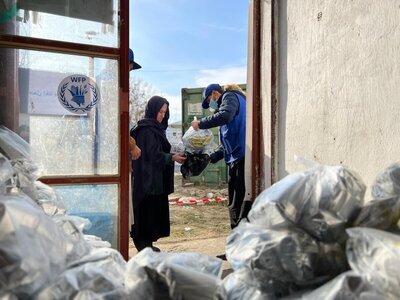Emergency
Afghanistan
- 9.5 million
- people are severely food insecure
- 4.7 million
- women and children need treatment for malnutrition.
- US$568 million
- urgently needed for WFP operations up to February 2026
A 6.0 magnitude earthquake struck eastern Afghanistan on 31 August, killing hundreds of people and injuring or otherwise affecting thousands more.
The epicentre was in Kuz Kunar District, Nangarhar Province. A second earthquake followed just two days later.
The World Food Programme (WFP) is delivering fortified biscuits and other supplies to communities as part of a sustained response, though access is challenging amid a rugged terrain.
The earthquake adds to a series of crises hitting Afghanistan, deepening an already alarming humanitarian outlook. The country is already grappling with surging malnutrition, forced returnees from Pakistan and Iran, an intensifying drought and a sharp decline in humanitarian aid due to funding constraints.
Two-thirds of female-headed families cannot afford basic nutrition and Afghan women and girls need WFP's assistance the most. Amid the clampdown on their education, employment and freedoms, they are still coming to our sites for life-saving food and nutrition assistance. However, due to lack of funding, WFP must turn away malnourished mothers and children at nutrition centres.
WFP urgently needs US$568 million for life-saving operations up to February 2026.
What the World Food Programme is doing to respond to the Afghanistan emergency
-
Earthquake response
-
WFP is delivering fortified biscuits and other supplies to communities as part of a sustained response, though access is challenging amid a rugged terrain. WFP has set up logistics, including moving mobile storage units to nearby areas, and dispatched storage tents to support the broader humanitarian response. We are also operating flights for passengers and cargo via the WFP-led United Nations Humanitarian Air Service.
-
Food and nutrition assistance
-
Nutrition
-
UNHAS

